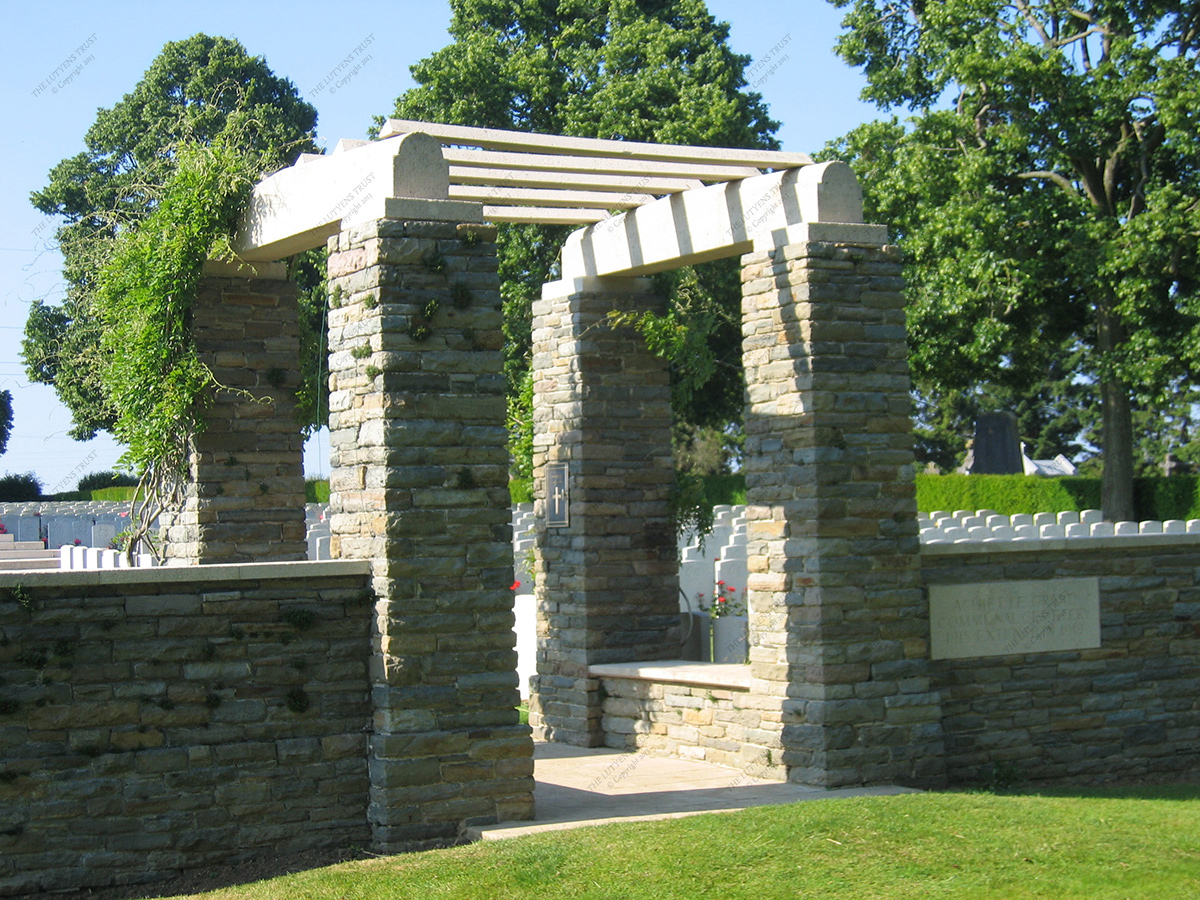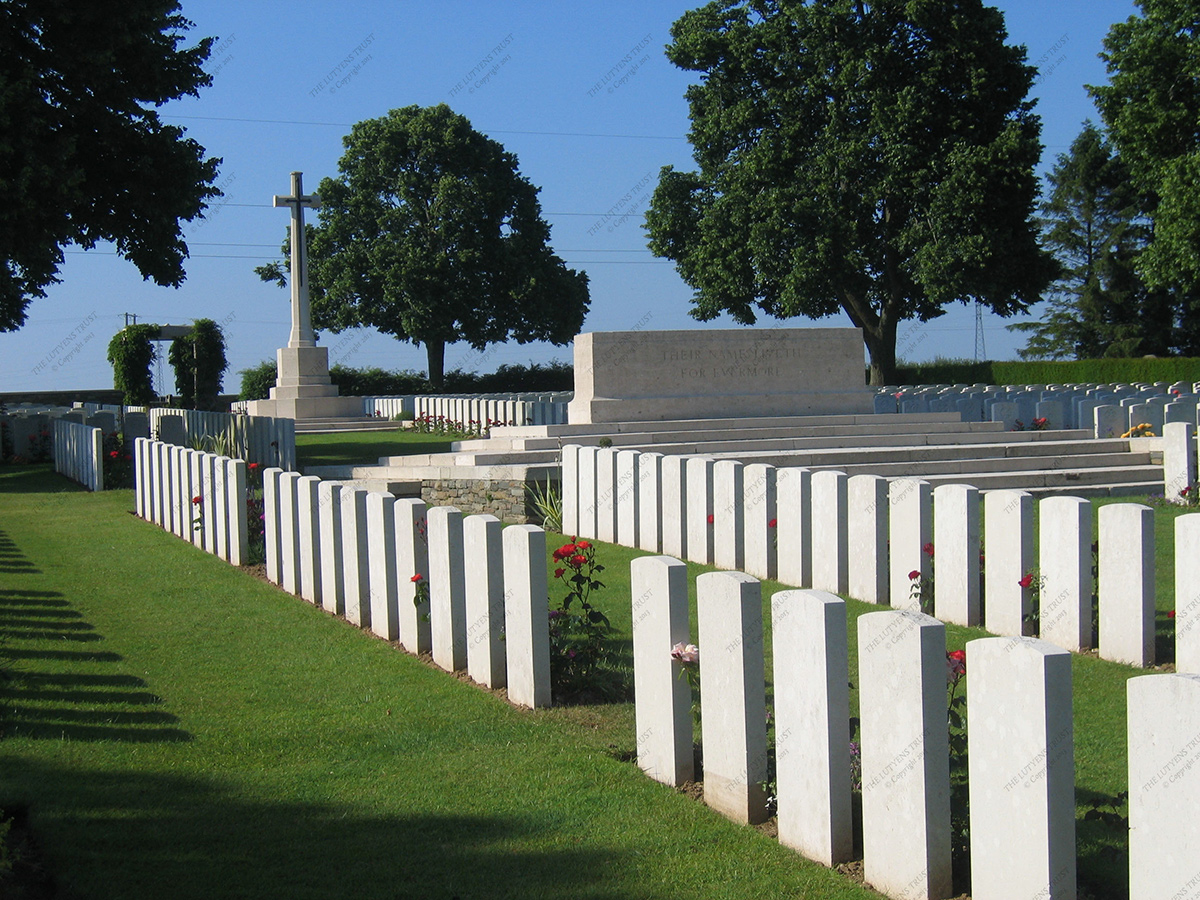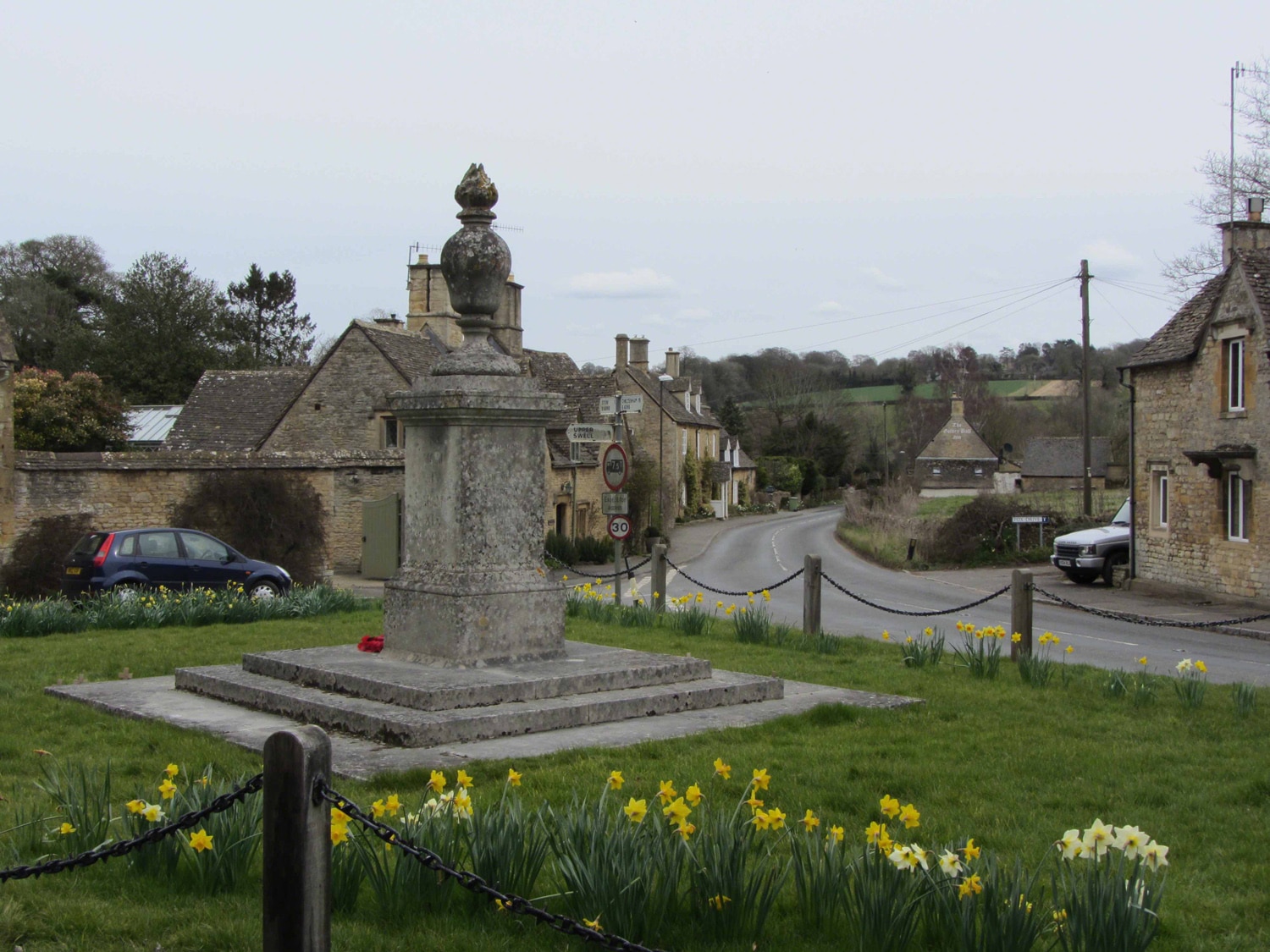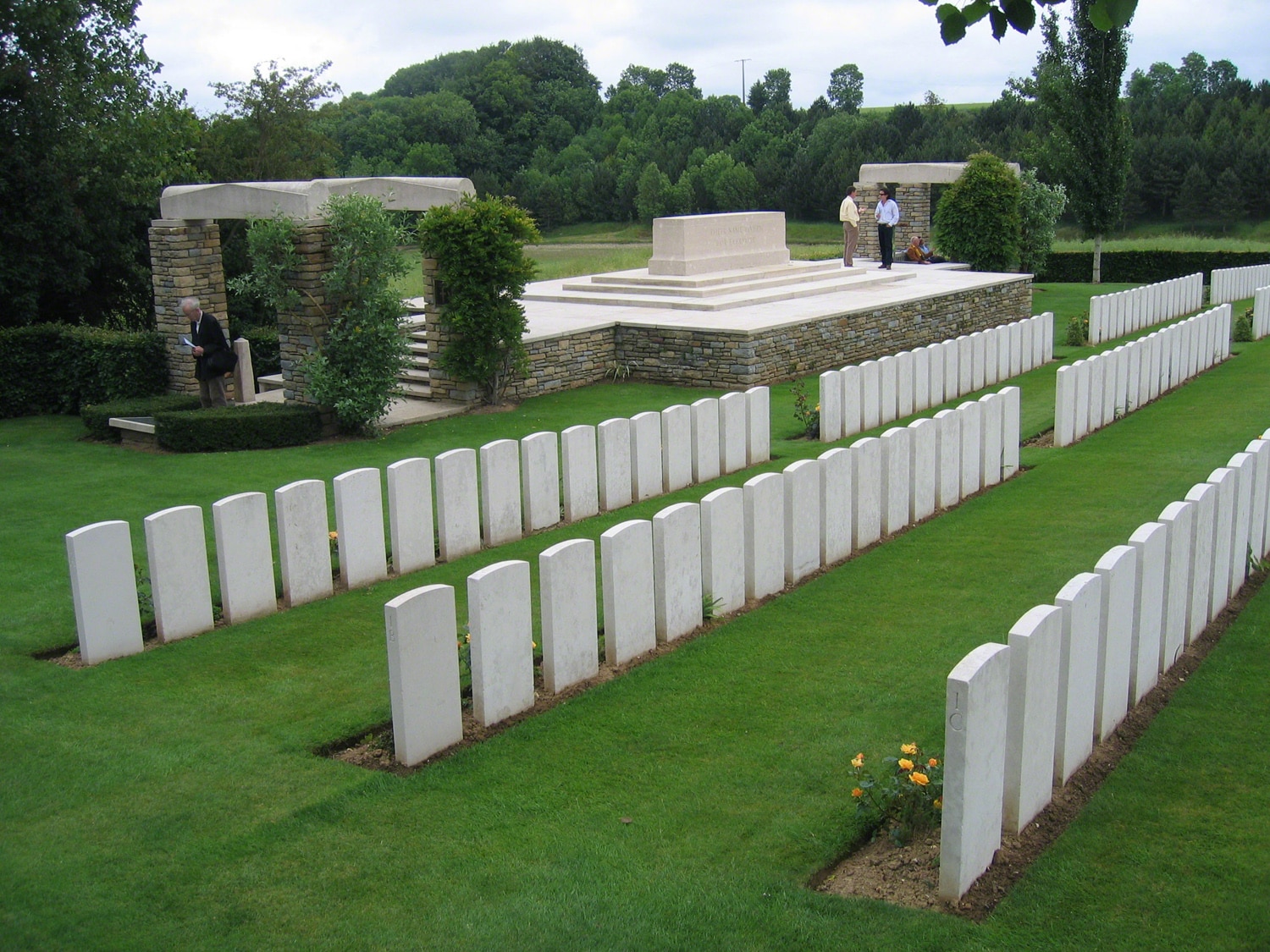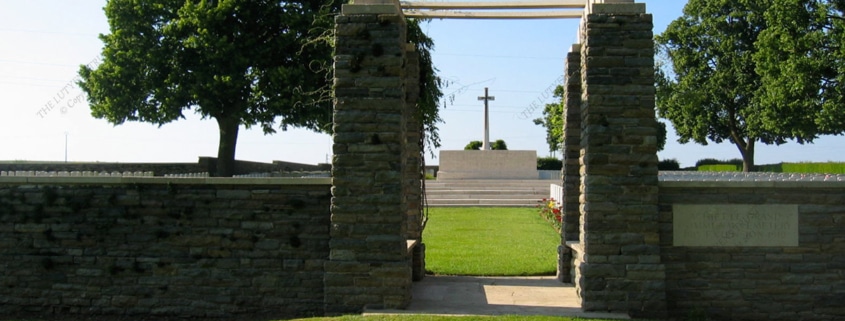
Description
The Allies had a terminus in Achiet-le-Grand. From April 1917 to March 1918 there were two Casualty Clearing Stations in the village which made use of the village cemetery and its extension. The extension was also used by the Germans in March and April 1918, and by British troops again from August 1918 onward. The graves from this period lie on the village cemetery side, to the right of the entrance. The German graves are situated to the right at the rear.After the Armistice, the extension was further enlarged. A strip was constructed as the central axis of the cemetery accommodating the entrance, the War Stone and the Cross of Sacrifice, with the gardener’s shed as its culmination. Both the Stone and the Cross were allocated a horizontal plateau in order to set off the differences in height on the sloping ground. The new graves were laid out on the left- hand side of strip, rotated 90° in relation to the earlier graves and oriented toward the War Stone and the east. The last plot iv has its own arrangement with graves back to back. This grave layout is seldom applied, but was also used at the cemetery in Béthune. More graves were installed along the central strip. The central position of the War Stone is comprehensible in that graves had already been placed on the east side. However, it would have been slightly more logical if the War Stone had been turned 90°.
The entrance on the left, next to the village cemetery, is formed by a pergola with two benches and is similar to that at Douchy-les-Ayette British Cemetery. This type of pergola was also applied at a number of other cemeteries in the vicinity, such as Albert, Bagneux and Warlincourt Halte British Cemetery. The pergola is covered with white wisteria and recurs at the end of the central axis where a pergola is covered with blue wisteria. The cemetery is surrounded by a low wall that follows the slope and occasionally alters in height. The field is surrounded by tall lime trees. (Geurst, 2010, p.188)
Bibliography
Geurst, J. (2010) Cemeteries of the Great War by Sir Edwin Lutyens. Rotterdam: 010 Publishers.Also Cited In
Listing Grade
Coming soonListing Reference
Client
Imperial War Graves Commission

